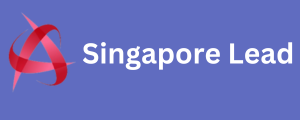Before finalizing the purchase of a product, the customer goes through a journey. During this journey, the points of contact between the consumer and the company can be decisive in the customer’s decision to purchase one or more products, or even to cancel the purchase.
This entire process, including after-sales, is part of the so-called Customer Journey. It occurs in both traditional and e-commerce . Mapping out the appropriate strategies at each stage of this journey can optimize the company’s performance and improve the customer experience.
What is the Customer Journey?
Understanding the Customer Journey is essential for a brand to impact people who show interest in the product it sells. The company needs to special database that it can solve the potential customer’s pain. In addition, understanding the customer journey is an excellent opportunity to increase the company’s sales.
The customer journey is basically the entire path taken by the consumer, from the moment they identify a need, through the period of research and gathering information about the product or brand, moving on to the purchasing process and post-sale communication. Every point of contact between the consumer and the company is part of the journey.
You know that moment when you’re taking a break and you decide to log into a social network and a company’s profile pops up that catches your eye? You click on that profile, evaluate the posts, read the comments and feel the desire to purchase the product offered by the profile. Up until that point, even though you haven’t contacted any of the company’s sales channels, you’ve started your journey.
But for this journey to be complete, each completed stage must lead the customer smoothly to the next stage without noise and uncertainty.
In the digital market, in particular, there is a huge variety of offers. In just a few minutes, after a brief search, people have access to several products similar to those offered by your company. That is why it is so important to show the advantages of purchasing the item offered.
Furthermore, it is worth remembering that the main objective should not be to lead the consumer directly to the purchase. Providing the best customer experience throughout the journey is the difference that leads the consumer to loyalty or even to recommending the product to people close to them.
Stages of the Customer Journey
The customer journey can vary the further the user is from this on the segment and complexity of the item offered, varying both in the time spent in each stage and in the finalization of the purchase.
However, it is possible to define four stages of this journey so that marketing strategies can be drawn up.
At each stage, there is an appropriate way for the company to communicate with the customer and direct the necessary actions. These are:
1 – Learning and Discovery
In the first stage, the potential phone number taiwan does not identify a need to purchase. He does not yet recognize that he has a problem, but he feels a desire to consume.
When a new smartphone is launched, for example, even though you already have a device (you don’t see the need to buy it), it awakens the desire to have more information about the launched product. Talk to friends and search the internet for other users’ opinions.
Typically, the person wants to gather information about it to see if it meets their demand.
In this phase of learning and discovery, it is time to offer educational and explanatory content, and show the value of the item you are offering. This is not the time to force a sale.
It may be that the potential customer does not even know your brand, and arrived at your business website simply out of curiosity.
Legal content formats to be worked on at this stage are: blog posts, infographics, videos and content on social media.
2 – Problem recognition
The person already recognizes that they have a problem and is looking for a solution. There are many doubts at this stage, as the market can offer many options for similar products. The company must demonstrate the difference in what it offers.
The main task remains to educate the public, but now with more complete materials. It can provide you with some data, to download an infographic, for example. And this information can later be used by the sales team.
Legal content formats to be worked on at this stage are: blog posts, infographics, videos, content on social media, e-books and online events.
